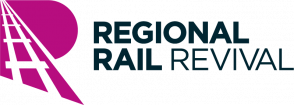The South Geelong to Waurn Ponds Duplication project traverses the traditional lands and waterways of the Wadawurrung People.
The project will create a lasting impact on local communities and the broader Geelong region.
It will do this by:
- building 5km of new walking and cycling paths
- building architecturally designed stations and bridges,
- incorporating water sensitive urban design, canopy trees, and areas for play and recreation.
It will also feature several public art commissions.
This project is about more than improved train services: it’s also about building connections to the unique places in this community.
We’re doing this by sharing and revealing stories, celebrating important industrial and sporting heritage, and designing new buildings and landscapes that embrace the region’s resilient and creative future.
Public artwork
Three artists have been commissioned to create artworks at Surf Coast Highway, Fyans Street and South Geelong Station.
An expression of interest callout for two artworks at Marshall Station were submitted in early September. Submissions are currently being considered by the Creative Advisory Panel, with successful artists to be announced in coming months.
Surf Coast Highway rail bridge artist: Billy-Jay (BJ) O’Toole
Wadawurrung Traditional Owner and artist BJ O’Toole will highlight the theme natural environment, with local landscape, coastline and traditional names prominent in his design for the new rail bridge at Surf Coast Highway.
BJ has a close connection to the region, growing up on Wadawurrung Country and having spent the last 10 years living across Torquay and Mount Duneed - travelling the Surf Coast Highway daily.
His love of art dates back to 2013, when at the age of 14 his first piece of public art was displayed on a billboard for Closing the Gap, and the following year he designed the first Geelong Cats Indigenous AFL guernsey.
Fyans Street rail bridge artist: Kait James
Wadawurrung Traditional Owner and artist Kait James has based her design for the new Fyans Street rail bridge around the Silver Wattle that grows throughout Wadawurrung Country, particularly along the Barwon River.
The leaf of the silver wattle will feature on more than 200 concrete panels on the rail bridge approach walls, celebrating the Indigenous flora theme.
Kait’s art features prominently in the Geelong region, including a 193 tea towel panel designs featured on the exterior panelling of the redeveloped Geelong Arts Centre and a five-storey Sheoak stairwell and meeting room art installation at Wurriki Nyal, Geelong’s Civic Precinct.
South Geelong Station artist: James Price
Local artist James Price will highlight the themes of local sport and community in his art design for South Geelong Station pedestrian overpass and ramps.
James’ connection to local sport dates back to 1996 through his selection with the Geelong Falcons in the then-TAC Cup, and his artwork aims to capture the role sport plays as a central storytelling device within our lives, and links people from various walks of life together to build community and connection.
A full-time artist who grew-up in Victoria’s regional south west, James has lived overseas and had his own animation company in New York, working for organisations such as MTV.
Precinct themes
In collaboration with Wadawurrung Traditional Owners Aboriginal Corporation and community feedback, overarching themes have been chosen for each artwork commission.
These themes will provide guidance to artists and ensure that each artwork is significant to the location and the community, while embracing the region’s resilient and creative future.
These themes include:
- South Geelong Station: Celebrating sport and community
- Fyans Street rail bridge: Indigenous Flora
- Marshall Station: Geelong’s industrial heritage
- Surf Coast Highway rail bridge: Natural environment
- Walking and cycling paths: Seasons and migration.
Artist selection process
A Creative Advisory Panel comprising of Wadawurrung Traditional Owners Aboriginal Corporation, Creative Victoria, the City of Greater Geelong, Regional Rail Revival and the Djilang Alliance has been established to select each of the artists.
Public artworks delivered by the project will be guided by Regional Rail Revival Creative Strategy which is committed to enhancing people’s experience of journey and place by working with regional artists and communities.
Urban design
The following key principles will guide the urban design outcomes for the project
Celebrate place and local identity
Local character and identity will be enhanced by integrating the design of the future stations and rail bridges with the surrounding urban and natural landscapes.
Improve access and movement
We will improve accessibility for everyone using South Geelong and Marshall stations, including commuters, pedestrians, cyclists and those with mobility aids by increasing accessibility and wayfinding around the station.
Support neighbourhood safety
Station designs will incorporate passive surveillance and improved lighting to support community safety. Removing the level crossings will boost safety for motorists, pedestrians and cyclists who use these intersections daily.
Promote high quality-built design
We are committed to delivering high quality architectural and landscape designs that reflect local character and leave a legacy long after the completion of the project.
Establish green connections
Green open spaces, shared user path connections and landscaped public areas will be established as part of the project to help support a more sustainable future and better connect communities.
Plan for the future
The new infrastructure will be carefully planned for the community and leave a positive legacy. Train stations are an important part of delivering liveable communities and the designs will consider the future growth of South Geelong, Marshall and surrounding areas
Engagement with Wadawurrung Traditional Owners Aboriginal Corporation
Before the project commenced, we engaged with Wadawurrung Traditional Owners Aboriginal Corporation to help us understand the area and establish some themes and opportunities to influence the urban design and public art that will be delivered by the project.
In response to that engagement, we developed three overarching principles for the project:
- Healing Country
- Connecting to Country
- Journeys on Country
